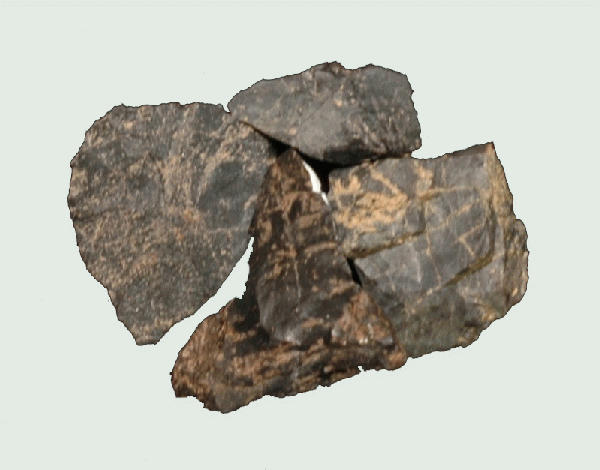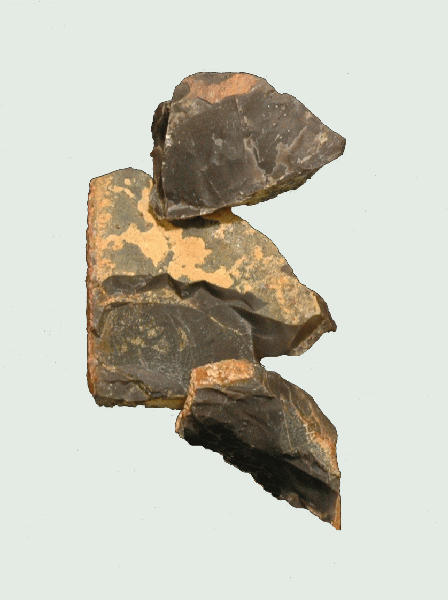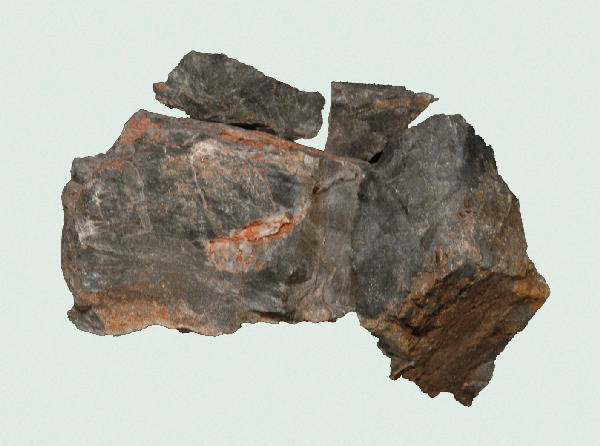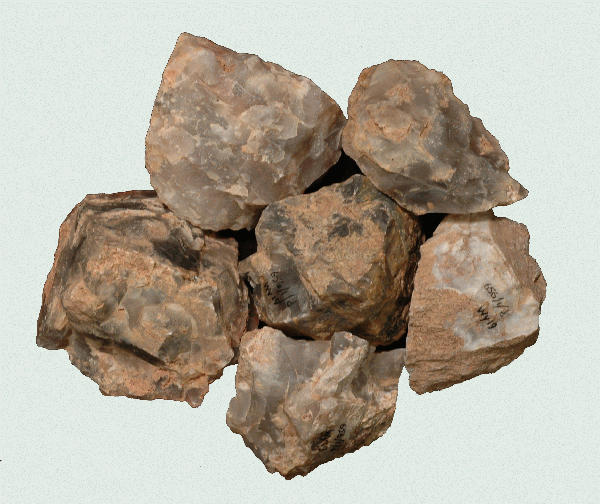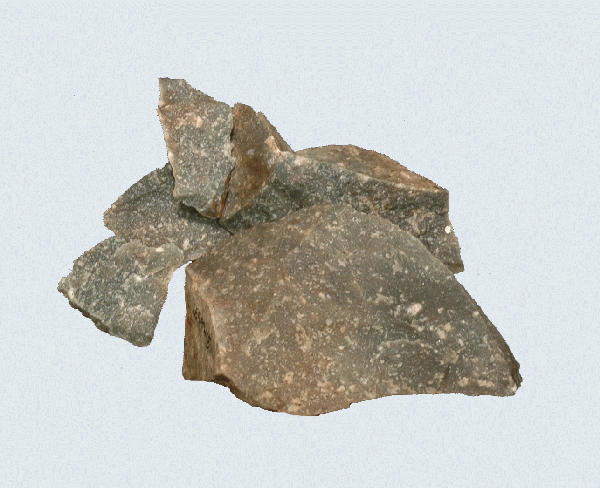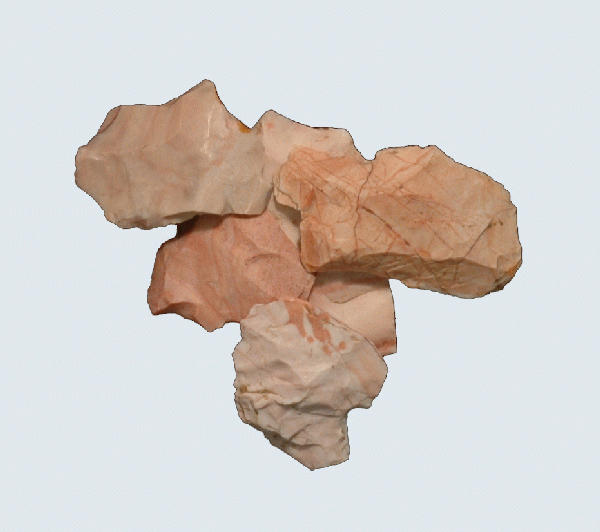Licking Creek Formation chert, Rockingham County, Virginia.
Beekmantown Formation chert, Rockingham County, Virginia.
Siding Hill Quarry, 44AU0763, Augusta County, Virginia.
Type Cherts
Collection Location:
Sidling Hill Chert Quarry Site, 44AU0763, in Augusta County; Licking Creek Chert in Rockingham County; and the Beekmantown Chert in Rockingham County, Virginia.
Description
A number of separate chert samples came from Augusta and Rockingham counties from the Lower Devonian and Upper Silurian Formations. (1) Helderberg blue chert is primarily a blue chert found as large nodules in limestone formations from this age. The Helderbert limestone formation is Lower Devonian in age and consists of the New Creek and New Scotland limestone formations. The Sidling Hill Quarry site contains not only blue chert but gray streaked or banded, and white cherts. (2) Licking Creek Formation chert, part of the Devonian-age Helderberg Limestone, are closely spaced layers of black chert. One of its identifying characteristics is its sandy-texture impurities and its tendency to fracture along thin bedding planes.
The Ordivician-age Beekmantown Formation chert is found throughout the Shenandoah Valley in a series of thin, southwest-northeast trending belts. Like other Ordivician cherts (Chepultepec, New Market), it varies in texture throughout the belts, but the color remains a dark gray. This dark gray, porous lenticular chert, is often fine-textured and sometimes fossiliferous. It is interbedded with gray dolomite and blue limestone. The lenses of chert are separated by a muddy dolomitic film.
Distribution
Throughout the lower Shenandoah Valley.
Cultural Implications
Lower Devonian and Upper Silurian Formation, and Ordivician cherts were used throughout prehistory in the central and northern Ridge and Valley.
References
Prepared By
Nash 1999; Tolley 1999; Egloff 2008
